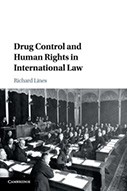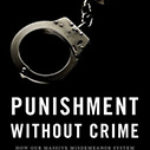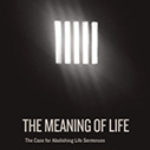Drug Control And Human Rights In International Law

Author: Richard Lines
Publisher: Cambridge, UK: Cambridge University Press, 2017. 234p.
Reviewer: James Windle | March 2019
Drug Control and Human Rights in International Law requires praise for three significant achievements. First, it presents a new and interesting perspective on the somewhat stale international drug control regime change debate. Second, while the book could very easily have been dry and repetitive, Rick Lines has crafted a well written, accessible and interesting account that is a genuinely difficult book to put down. The legal discussions are easy to follow for a non-lawyer, and the two chapters of concise historical context mean that the reader does not need prior knowledge of the history of global drug prohibition. Third, and most importantly, Lines mixes historical perspectives with contemporary insights and legal analysis to present a credible and rational approach to drug control. Line’s long career in non-governmental organisations, and subsequent observation of and participation in United Nations debates on drug policy, add additional weight to this piece of solid historical-legal research.
Lines’ core argument is that the international drug control treaties contain a tension between humanitarian aspirations of improving health and well-being, and a perceived moral obligation to suppress an ‘evil’ which threatens the very ‘fabric of society’. The suppression element has often overshadowed the humanitarian element, and attempts to suppress the ‘evil’ of drugs have resulted in significant human rights violations. Many national and intergovernmental interpretations of the three international drug control treaties frame them ‘in a manner in which abusive practices and policies are not only considered necessary but are morally justified by the righteousness of the humanitarian end goal itself’ (p.14). Lines convincingly argues that a ‘dynamic, human rights-based interpretative approach’ to the drug control treaties would resolve these tensions and conflicts between suppressing an ‘evil’ and protecting the rights of the individual.
It is argued that an interpretative, dynamic human rights approach would take us into a fifth stage of international drug control –one that merges drug control and human rights obligations. According to Lines, this is not necessarily a great stretch, as the ultimate goal (telos) of the three drug control treaties is to ‘promote the health and wellbeing of humankind.’ A number of contemporary examples – including compulsory drug ‘treatment’ and the death penalty for drug offences – are used to demonstrate that many of the most harmful ‘drug control’ practices conflict with both international human rights obligations and the overarching objective of the international drug control treaties.
Chapter three provides an insightful discussion on the origins of drugs as ‘evil’ and drugs as an existential threat, discourses in a comparative perspective (illustrated by the surprising fact that drugs are described as evil under international law, yet slavery, apartheid, torture and nuclear war are not). Lines is spot-on that the labelling of drugs and drug market participants as evil, and the subsequent securitisation of drugs, causes significant harm and provides a justification for human rights violations. I agree with Lines that the framing of drugs as evil should be ‘abandoned as an historical curiosity’ (p.73). Elements of this chapter and subsequent discussions, however, feel dismissive of the very real harms caused by drug use and drug markets. A little more insight, balance and empathy with those impacted by drugs could have been achieved by acknowledging these harms from both an individual and wider community perspective.
The book is directed at academics, lobbyists and policy makers, and the core argument is intended to influence policy. Governments and administrators, however, seldom accept criticism without alternative policy options, especially as punitive measures against drugs often receive strong public support. The human rights angle can, at times, feel like a parent telling a child to stop being bold. It’s fine to say that the death penalty for drug offences, compulsory drug ‘treatment’ and limiting access to harm reduction conflicts with both human rights laws and drug treaty obligations. Pointing this out, however, is unlikely to result in the formulation of more humane and evidence-based alternatives. The policy impact of the book could have been strengthened by a) drawing from the extensive research base to show that many of the most harmful drug control practices are also the least effective; and b) suggesting alternatives, or at least pointing to where suggestions can be found. For example, research shows that compulsory treatment centres in Southeast Asia can increase the risk of contracting HIV, and relapse rates are high, partly because the stigma of being an inmate often makes it difficult for users to reintegrate back into their communities (see Tomori et al., 2014; Hayes-Larson et al., 2013; Nguyen et al., 2000). Because these centres are seemingly ineffective at present in terms of reaching the goals of both harm reduction and abstinence, what the Southeast Asian states need most are cost-effective and politically viable alternatives (Windle, 2015). Again dismissing the harm caused by drugs, in addition to people’s fears of drug use and markets, can result in a failure to offer realistic solutions to real problems.
I take relatively minor issue with Line’s discussion of the international drug control regime as one integrated unit, and believe that the conflict between the INCB and UNODC could have been acknowledged to a greater extent. For example, the author states ‘within the drug control system, harm reduction interventions have often been seen as controversial because they do not abide by the dominant paradigm of abstinence from the “evil” of drug “addiction.”’ UNODC and its forerunners have, however, a long history of promoting harm reduction, in some areas at least, and thus it seems as if the criticism is directed primarily at the INCB.
A more pressing critique is that Line’s core arguments are supported by the most obvious examples of human rights violations in the name of drug control: compulsory drug ‘treatment’ and the death penalty for drug offences. These are important issues, but the examples used by Lines are among the most harmful, more often practiced in the global south and most likely to gather significant opposition. The discussion on the right to use coca is the most contentious example used, yet even here discussing the right to traditional uses of coca is easier to sell than is the comparable, yet unmentioned, right to traditional uses of opium – a drug more harmful to the individual and community, especially in its refined form of heroin. It would have been interesting to read a discussion of how we might tackle issues which might be met with greater resistance if framed within a human rights framework. For example, could a rights-based interpretation of the drug control treaties be used to oppose stop and search for drug possession in the UK, or to support recent proposals to decriminalise drug possession and administer safe injecting facilities in Ireland? (There is a strong rights-based argument for safe injecting facilities, but I wonder if lobbyists have avoided referring to the rights of the consumer because opponents of safe injecting facilities could counter with ‘what about our rights’).
These criticisms should not detract from what is an interesting and important book, and I appreciate that no one book can cover all bases. Rick Lines’ core argument – that interpretation of the three drug control treaties should take a dynamic human rights approach – should be analysed, debated and eventually applied. Drug Control and Human Rights in International Law will be a useful resource for students and academics wanting to understand national and domestic drug laws in an historical context, as well as for anyone lobbying for a more humane and more effective drug policy.
References
Hayes-Larson, Eleanor, Lauretta Grau, Kaveh Khoshnood, Russell Barbour, Oanh Khuat, and Robert Heimer. (2013). Drug Users in Hanoi, Vietnam: Factors Associated with Membership in Community-Based Drug User Groups. Harm Reduction Journal, 10(1), 33.
Hien, N. T., Giang, L. T., Binh, P. N., & Wolffers, I. (2000). The Social Context of HIV Risk Behavior by Drug Injectors in Ho Chi Minh City, Vietnam. AIDS Care, 12(4), 483-495.
Tomori, C., V.F. Go, N. Tuan, N.M. Huong, N.T. Binh, C.E. Zelaya, T. Dat, and
V.M. Quan. (2014). ‘In their perception we are addicts’: social vulnerabilities and sources of support for men released from drug treatment centers in Vietnam. International Journal of Drug Policy, 25(5), 897-904.
Windle, J. (2015). Drugs and drug policy in Thailand. Improving Global Drug Policy: Comparative Perspectives and UNGASS 2016. Washington, Brookings Institute.
James Windle, Lecturer in Criminology, University College Cork.


